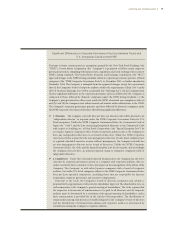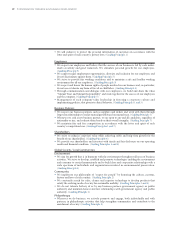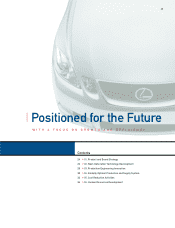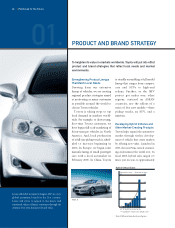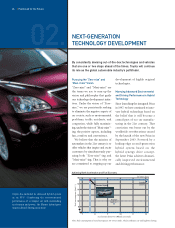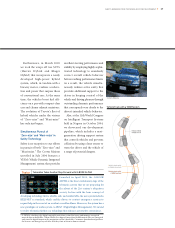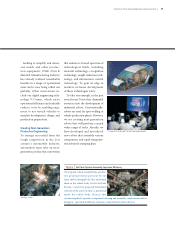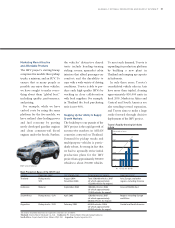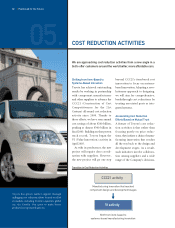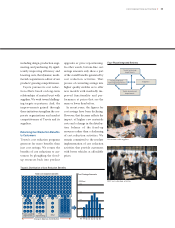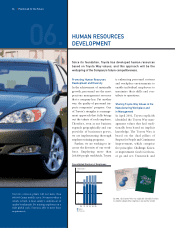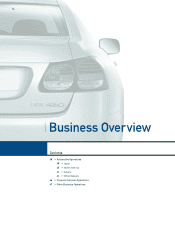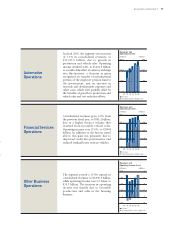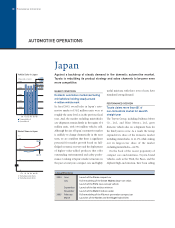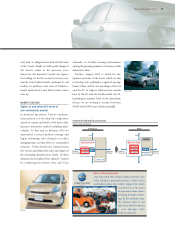Toyota 2005 Annual Report Download - page 31
Download and view the complete annual report
Please find page 31 of the 2005 Toyota annual report below. You can navigate through the pages in the report by either clicking on the pages listed below, or by using the keyword search tool below to find specific information within the annual report.
PRODUCTION ENGINEERING INNOVATION >29
Seeking to simplify and down-
size molds and other produc-
tion equipment, UMR (Unit &
Material Manufacturing Reform)
has already realized remarkable
benefits in a range of operational
areas and is now being rolled out
globally. Other innovations in-
clude our digital engineering tech-
nology V-Comm, which raises
operational efficiency and radically
reduces costs by enabling engi-
neers to use virtual vehicles to
simulate development, design, and
production preparation.
Creating Next-Generation
Production Engineering
To emerge successful from the
tough competition in the 21st
century’s automobile industry,
automakers must take on next-
generation production innovation
that embraces a broad spectrum of
technological fields, including
material technology, recognition
technology, weight reduction tech-
nology, and information control
technology. To gain an edge in
markets, in-house development
of those technologies is key.
To take one example, in the past
several years Toyota has channeled
resources into the development of
industrial robots. Conventionally,
robots are used for spot welding at
vehicle production plants. However,
we are creating next-generation
robots that will perform a much
wider range of tasks. Already, we
have developed and introduced
new robots that assemble various
components and rapid-transporta-
tion robots for stamping lines.
On a typical vehicle assembly line, produc-
tion personnel choose parts one by one
from shelves alongside the line and attach
them to the vehicle body. In the Set Parts
System, a work box prepared beforehand
with all of the parts needed is positioned
inside the vehicle body. Because that
system completely separates component carrying and assembly, cumbersome shelves
disappear, operational efficiency increases, and production lines shorten.
Set Parts System Assembly Improves Efficiency
Topics
V-Comm (Visual and Virtual Communication)
Welding robot


